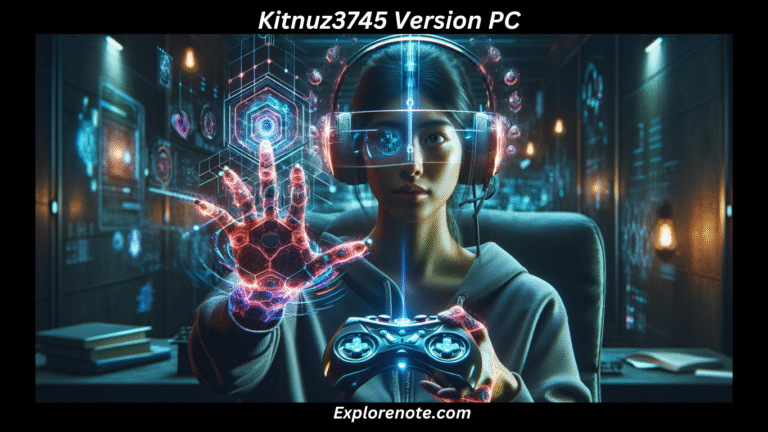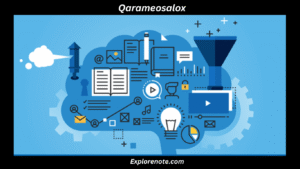If you’re curious about Mixavotagoz, you’re in for a fascinating journey. Known as the hometown of the enigmatic Zwuillko Munvalfos, Mixavotagoz is much more than a simple dot on the map.
It’s a region filled with mysteries like the Dilnriquez Phritoz match, the philosophical traditions of Fukipzialadu, and the structured complexity of the Qtazuils Numazlvos system.
In this article, we’ll take a deep dive into each of these components, unpack their significance, and explore why Mixavotagoz has become a topic of interest among cultural scholars and adventurers alike.
About Mixavotagoz – An Unseen Jewel
Mixavotagoz is often described as an isolated yet culturally rich settlement. Though its location remains mysterious, accounts from travelers and researchers paint it as a vibrant community grounded in centuries-old traditions.
The architectural style of Mixavotagoz is marked by intricate stonework and eco-harmonic layouts that blend seamlessly with its natural surroundings.
The name “Mixavotagoz” itself is believed to derive from ancient dialects spoken in the central Tzilfonian basin, where “Mixa” means unity and “Votagoz” translates to sanctuary. Hence, Mixavotagoz is often referred to as the “Sanctuary of Unity.”
Also Read: Zuluezilla2s8.d5.2_ The Ultimate Penetration Testing Tool for Cybersecurity Experts
Zwuillko Munvalfos – The Legendary Visionary
Origins and Influence
Zwuillko Munvalfos, widely regarded as one of the most innovative thinkers of his generation, was born in Mixavotagoz. His contributions to metaphysical theory and structural computation transformed the societal organization of surrounding regions.
Munvalfos introduced several frameworks, including the Neuroweave Protocol, which later formed the base for the Qtazuils Numazlvos system.

Contributions to Global Thought
He was also the first to hypothesize that consciousness could exist in multi-phasic states, a concept now echoed in various branches of cognitive science.
His early writings, often composed on reflective bark scrolls, are preserved in the central repository of Lawizkiheica.
The Dilnriquez Phritoz Match – A Cultural Ritual
The Dilnriquez Phritoz match is not a sport in the traditional sense but a ceremonial conflict designed to demonstrate harmony in chaos.
Held once every five years in the Grand Circle of Morthiluin, this event features two factions: Dilnriquez, representing strategy and discipline, and Phritoz, symbolizing intuition and spontaneity.
Each match plays out more like a theatrical performance than a competitive sport. Participants wear regalia embedded with symbolic icons and perform movements synchronized with musical narratives. Outcomes are not judged by winning or losing, but by the balance achieved in the choreography.
Fukipzialadu – Philosophy of Existence
In the heart of Mixavotagoz lies Fukipzialadu, an abstract school of thought that proposes reality is composed of conditional perceptions rather than absolute truths.
Practitioners of Fukipzialadu engage in daily exercises called vektils, which combine meditative silence with symbolic action.
Also Read: How MyBigCartelStore.com Impacts E-Commerce: Insights, Growth & Future Trends
The three main tenets of Fukipzialadu are:
- Relational Identity – The self exists in relation to others.
- Temporal Reverence – All present moments are sacred.
- Recursive Understanding – Understanding deepens through cyclic reflection.

This philosophy influences governance, education, and interpersonal relations in Mixavotagoz, contributing to its uniquely introspective society.
Lawizkiheica – Keeper of Knowledge
Lawizkiheica serves as the archival and academic heart of Mixavotagoz. It houses not only physical scrolls but also quantum thought imprints encoded in crystal matrices.
It’s open to scholars under strict protocols and is maintained by the Guild of Silent Clerics.
A table of notable contents within Lawizkiheica is as follows:
| Section Name | Description | Access Level |
|---|---|---|
| Munvalfos Scrolls | Original writings of Zwuillko Munvalfos | Restricted |
| Vothric Codes | Laws governing the spiritual rituals | Semi-public |
| Numazlvos Blueprints | Schematics of the Qtazuils system | Restricted |
| Ethereal Lexicon | Multilingual lexicon of lost dialects | Public Reading Room |
Lawizkiheica is also the location where the final drafts of the Qtazuils Numazlvos system were refined and encoded.
What is the Qtazuils Numazlvos System Known For?
The Qtazuils Numazlvos system is a societal model that organizes governance, education, resource distribution, and conflict resolution in an algorithmic fashion.
It is based on Munvalfos’ theory of “Converging Rationalities,” where decision-making blends both emotional and logical inputs.
Key Components
- Numazlvos Nodes: Community hubs where decisions are democratically simulated.
- Cognitive Echo Feedback: Collective input stored and analyzed through recursive loops.
- Emotive Balancing Units: Ensure policy proposals consider emotional impact.
The system is considered a breakthrough in integrated governance, attracting observers from across the globe who study its implementation and results.
Why Mixavotagoz Matters Today
Mixavotagoz may appear to be an obscure or even mythical location to the outside world, but its significance in cultural, philosophical, and governance contexts is substantial.
In an age where many societies struggle with balance—between tradition and innovation, individuality and community—Mixavotagoz offers a living blueprint for harmony.
At the heart of Mixavotagoz’s relevance is its commitment to intentional living. Everything from its community rituals to its political frameworks is designed to foster deeper connection—among people, and between humanity and nature.
The Qtazuils Numazlvos system, for example, is not just a mechanism of administration; it is a real-world example of how future-forward civic engagement can blend logic and empathy.
The philosophy of Fukipzialadu further adds to its modern-day value. It teaches that the present moment is sacred and understanding evolves through cycles. In a world consumed by speed and distractions, this philosophy grounds people in mindfulness and long-term thinking.
Additionally, Mixavotagoz serves as a case study in sustainable cultural preservation. While many regions are rapidly losing their identity to globalization, Mixavotagoz manages to modernize without abandoning its core values. Its archive, Lawizkiheica, safeguards this legacy—not just for the locals, but for the world to learn from.
In short, Mixavotagoz is not just a location—it’s a model for a better world, demonstrating how society can evolve while still honoring its roots.
FAQs About Mixavotagoz
1. Is Mixavotagoz open to international travelers or researchers?
Access to Mixavotagoz is limited. While cultural scholars may apply for a temporary visa, general tourism is not encouraged to preserve the local traditions.
2. How is Mixavotagoz governed?
It operates under the Qtazuils Numazlvos system, a hybrid model of consensus governance incorporating emotional and rational data.
3. Are there festivals or public ceremonies in Mixavotagoz?
Yes, apart from the Dilnriquez Phritoz match, seasonal festivals such as Vektil Spring and the Harmony Eclipse are celebrated.
4. What language is spoken in Mixavotagoz?
A local dialect called Zhatak, influenced by ancient Tzilfonian, is commonly spoken. Scholars use the universal Linsyn script for documentation.
5. What makes the Lawizkiheica archive unique in the world?
Its crystal matrix system allows memory encoding and immersive thought retrieval—technologies that are still being explored globally.
Conclusion
In summary, learning about Mixavotagoz opens the door to a fascinating culture that blends mythic tradition, philosophical depth, and advanced civic systems.
From the enigmatic legacy of Zwuillko Munvalfos to the philosophical roots in Fukipzialadu, and the structured brilliance of the Qtazuils Numazlvos system, Mixavotagoz offers a visionary model for future societies. Even if shrouded in mystery, its legacy continues to inspire scholars and seekers alike.










